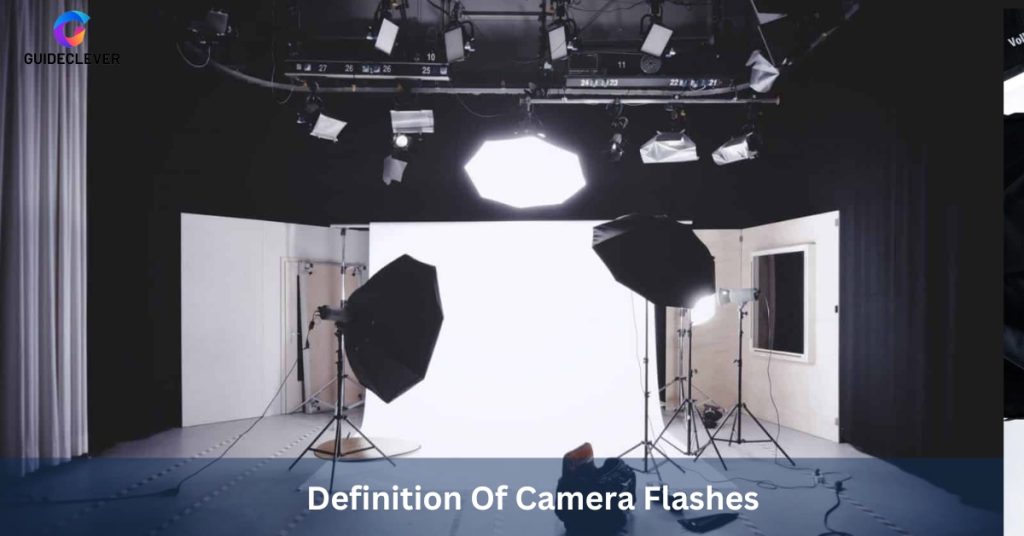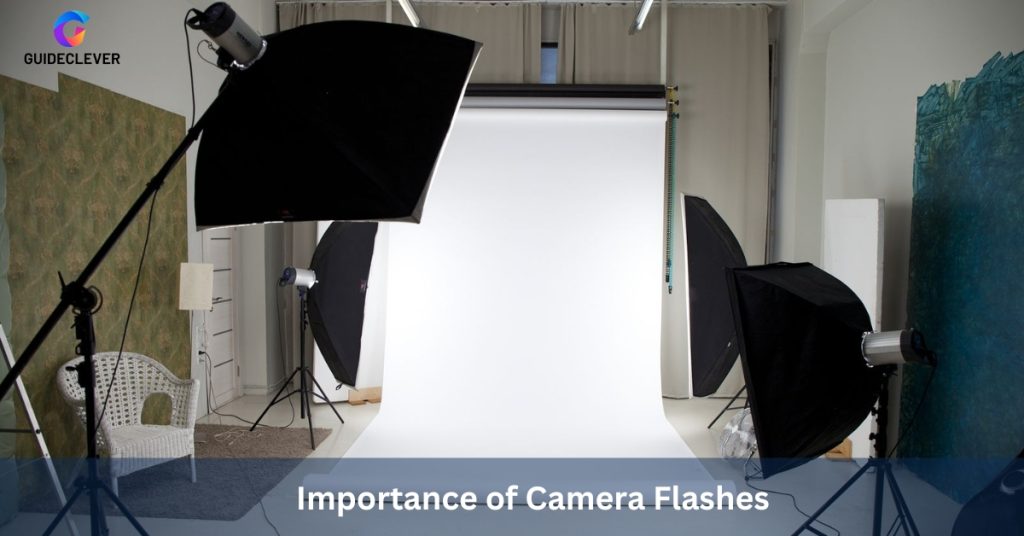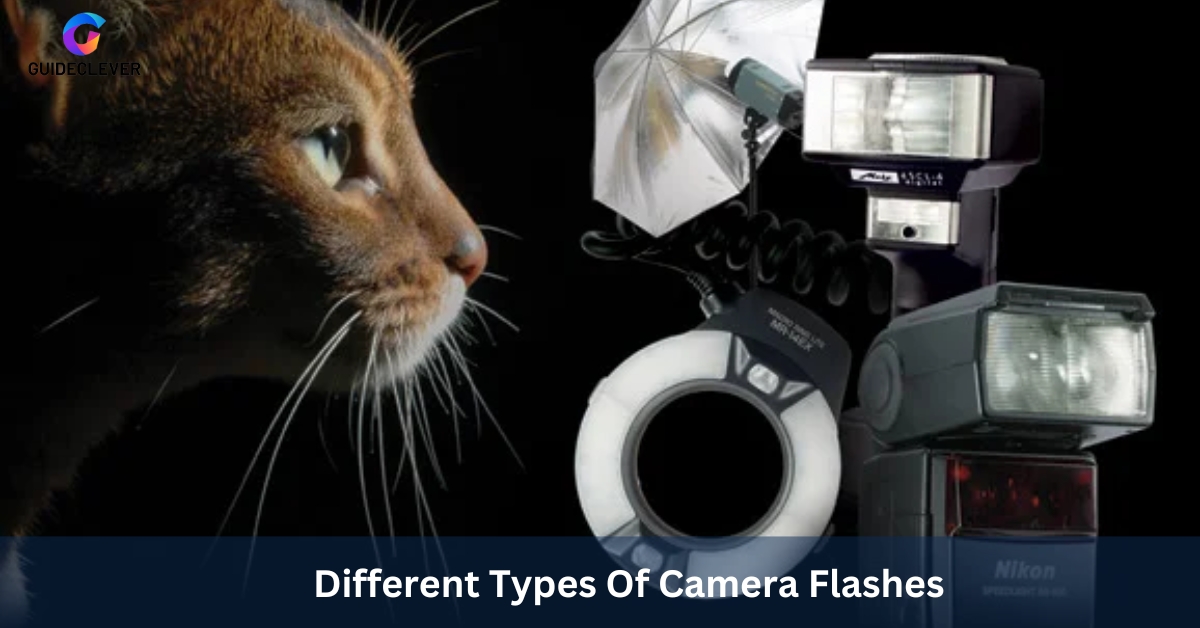The camera flashes are one of the most important components of any photography setup. Camera flashes are an important tool for any photographer. They provide the necessary illumination needed to capture clear pictures in dim lighting. Camera flashes can also be used creatively, adding unique elements to photographs, such as shadows, highlights, and depth. There are two main types of flashes to choose from: external and built-in.
In this article, we will discuss the differences between external and built-in camera flashes. Then you can determine which type works best for your particular situation.
Contents
Definition Of Camera Flashes

Camera flashes are pieces of equipment that provide supplemental light during photography sessions. The flash is typically attached to the camera and triggered when the shutter button is pressed. This extra burst of light is used to fill in areas where natural or ambient illumination is insufficient.
Importance of Camera Flashes

A camera flash is a tool that emits a brief burst of light to illuminate the scene. Here are some of the importance of camera flashes:
1. Camera flashes provide more light to take pictures in low-light environments. It makes it easy to capture clear images in difficult lighting situations such as indoor photography.
2. Common Camera flashes also assist in lowering the level of noise in photographs. It allows you to capture a more detailed and accurate image.
3. Camera flashes can also be used to create interesting lighting effects, such as creating a silhouette effect or highlighting certain elements in the picture.
4.Flashes from cameras can also be employed to freeze a specific point in time . It allows you to capture fast-moving subjects without blur.
5. Camera flashes are also a great way to reduce the number of shadows in an image. It can make for a more professional-looking photo.
6. Camera flashes can also be used to add mood and atmosphere to a photograph. It enables you to produce photos that are more dynamic and engaging.
7. Lastly, camera flashes can also be used to eliminate the need for a tripod. They provide enough light to take pictures without needing steady support. This can be especially useful when shooting outdoors or in other locations where tripods are not allowed or impractical to use.
Overall , Camera flashes are an all-purpose tool that may be used to take better pictures in a range of settings. A flash is a necessary piece of equipment if you take your photography seriously.
Different Types Of Camera Flashes

There are two main types of camera flashes: external and built-in. Now we discuss this type of camera flash:
Built-In Flashes
There Are Two Main Types Of Built-In Flashes: Pop-Up Flashes And Tilting Flashes.
Pop-up flashes: These are the most common type of built-in flash. They are located at the camera’s top and pop up when needed. Pop-up flashes are not very powerful, but they are easy to use and are included in most cameras.
Tilting flashes: These flashes are more powerful than pop-up flashes. It gives the user additional control over the light’s direction. Tilting flashes can be tilted up or down, allowing you to bounce the flash off a ceiling or wall to create a softer light.
Here are some of the benefits of using a built-in flash:
- They are portable due to their size and lightweight.
- They are relatively inexpensive.
- They are easy to use.
Here are some of the drawbacks of using a built-in flash:
- They are not very powerful.
- They can create harsh shadows.
- They can be difficult to control.
Suppose you are looking for a basic flash that is easy to. Doesn’t cost a lot of money. A built-in flash may be a good option for you. However, if you require more control and power, you might want to think about using a speedlight or studio flash.
External Flashes
There Are Two Main Types Of External Flashes: Speed Lights And Studio Flashes.
Speedlights: Speedlights are small, portable flashes that attach to a camera’s hot shoe. They have more functions, like zoom and bounce, and are more powerful than built-in flashes. Speedlight flashes camera opens in a new window icon
Studio flashes flashes camera:
Studio flashes are large, powerful flashes used in studio photography. They offer much control over the light and can be used with various modifiers.
Here is a more detailed description of each type of external flash:
Speedlights: Speedlights are the most popular type of external flash. They are portable due to their size and lightweight . They are also inexpensive, making them a good option for budget-minded photographers. Speedlights offer a variety of features, including zoom, bounce, and high-speed sync. High-speed sync allows you to use the flash at shutter speeds faster than the camera’s sync speed.
Studio flashes: Studio flashes are larger and more powerful than speedlights. They are also more expensive. Studio flashes offer much control over the light and can be used with various modifiers. Modifiers are devices that change the shape and direction of the light from a flash. Some common modifiers include softboxes, umbrellas, and snouts. Studio flashes are often used in studio photography but can also be used outdoors.
The type of external flash you choose will depend on your needs and budget if you are looking for a small, portable flash. It is easy to use and doesn’t cost much money. A Speedlight may be a good option for you. However, if you require more control and power, you might want to think about using a studio Flash.
Different Between External Vs. Built-In Flashes
| External Flash | Built-In Flash | |
| Placement | Detachable and mounted on the camera hot shoe or held off-camera | Integrated into the camera body |
| Power | Typically more powerful and versatile | Generally less powerful and limited in options |
| Versatility | Adjustable angles and positions | Fixed position and limited adjustability |
| Coverage | Wider coverage and ability to bounce light | Limited coverage and direct flash only |
| Control | Manual control over settings and power | Automatic settings and limited manual control |
| Portability | Requires additional equipment to carry | Always available and doesn’t add bulk |
| Cost | Generally more expensive than built-in flash | Included in the cost of the camera |
| Accessibility | Can be used across different camera models | Limited to the specific camera it is built into |
Which One Suits You Best?
Which type of flash is best for you will depend on your needs and budget. A built-in flash may be a good option if you are looking for a basic flash that is easy to use and doesn’t cost much money. However, if you need more power and control, Consider using an external flash, if possible.
Here is a comparison of the two types of flashes in more detail:
Built-in flashes
Pros
- Small and lightweight
- Easy to use
- Inexpensive.
Cons
- Not very powerful
- It can create harsh shadows
External flashes
Pros
- More powerful
- More control over the light
- It can be used with modifiers
Cons
- Larger and more expensive
- More difficult to use
Ultimately, the best way to decide which type of flash is right for you is to experiment with both and see what works best for you.
Conclusion
Camera flashes are essential for photographers, providing necessary illumination and creative possibilities. It was a great article. This difference between external and built-in flashes helps you make an informed decision. I think adding a section on choosing the right flash for your needs would be helpful.


